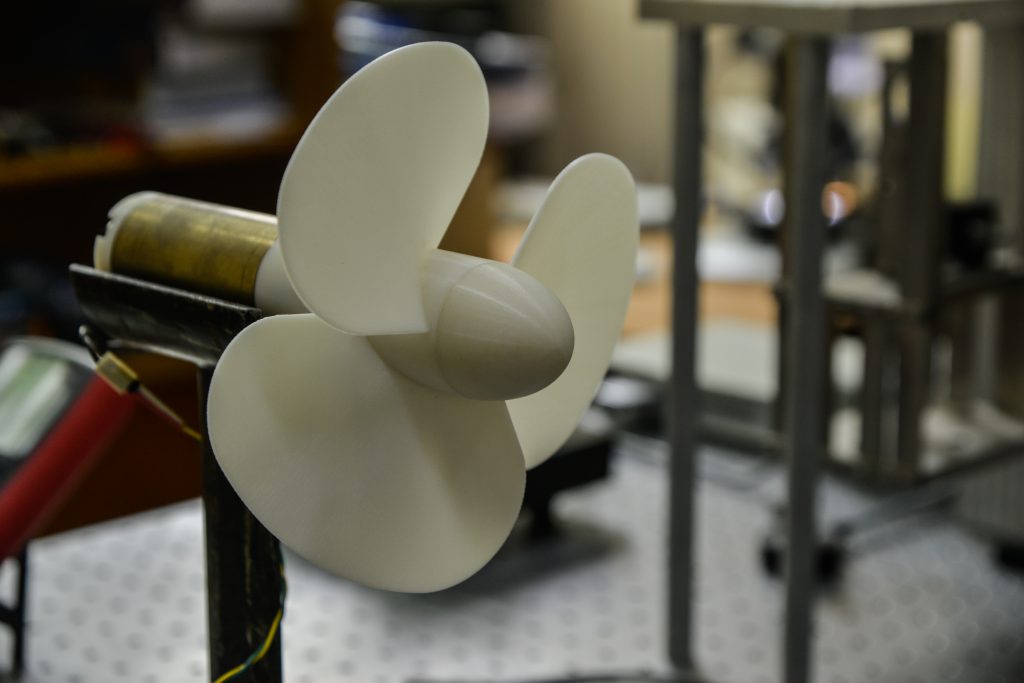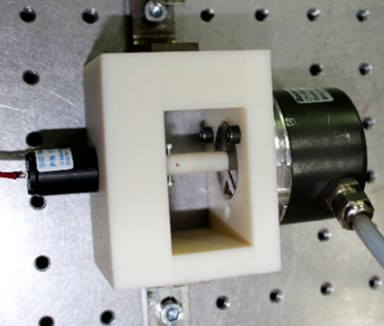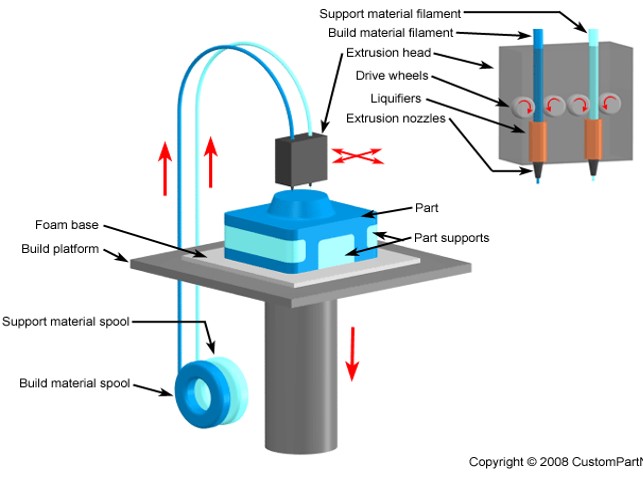-
For models with dimension of up to 254 x 254 x 305 mm, with 178 mm layer thickness and positioning accuracy of 240 mm.
-
2 heads (building and support material).
-
FDM (Fused Deposition Modelling) technology (heating and extrusion of thermoplastics); material: ABSplus (acrylonitrile butadiene styrene).
-
Import of STL (Standard Tessellation Language) 3D models from CAD + SW for printing process optimization (including support structure optimization).
-
An additional 3D printer (Stratasys Connex 500), capable of using up to 14 different materials with different stiffness properties, available at the Faculty of Civil Engineering on same U. of Rijeka campus → PolyJet technology: similar to desktop inkjet printers, with photo polymer material hardened under UV light; printing resolution down to 16 mm.
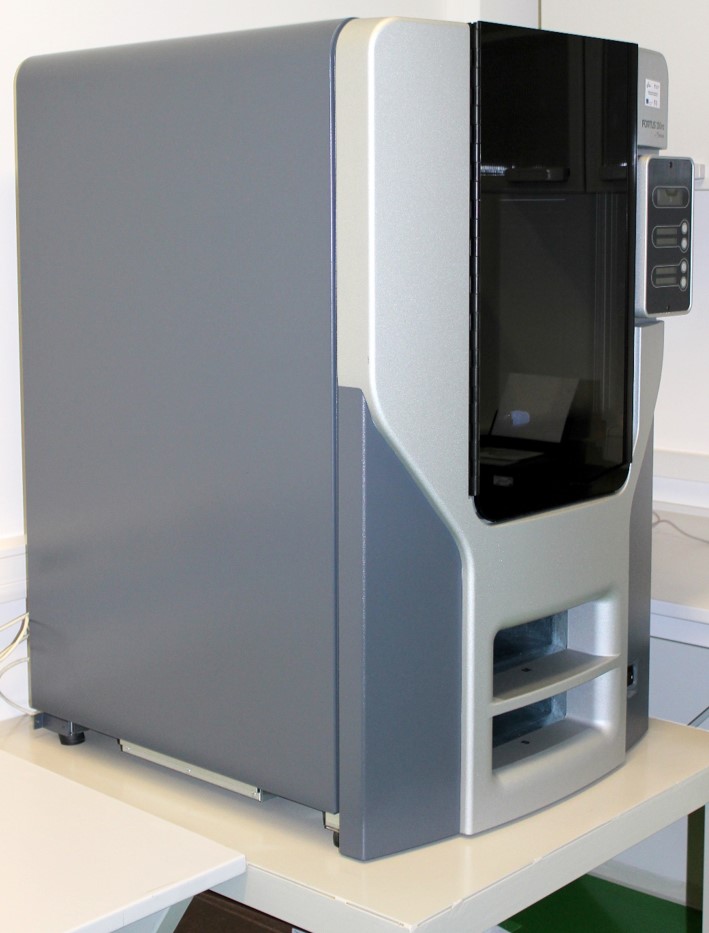
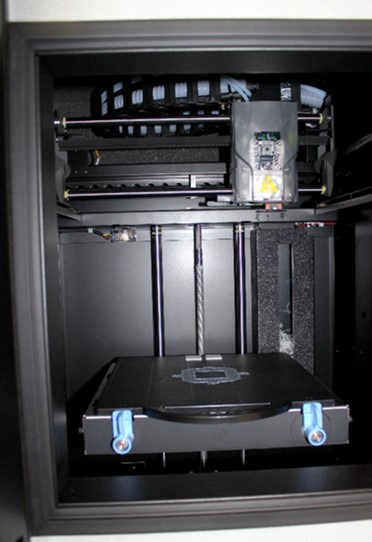
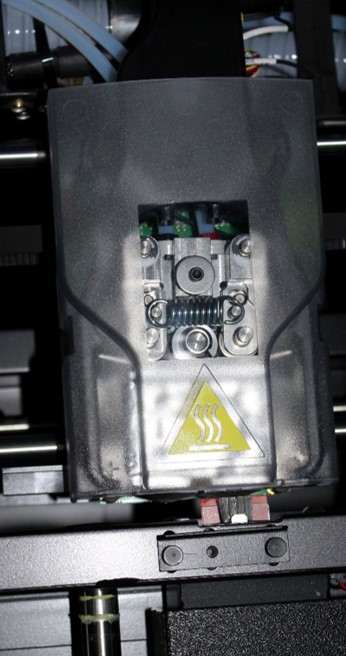
FDM process:
-
Advantages: laser not needed, fast and secure procedure, lower power consumption, unnecessary cooling and ventilation, simple usage, low investment, low maintenance costs, small size (additional room not needed), warping effect minimised.
-
Disadvantages: surface can be rough and models can have a certain porosity, model functionality is limited by the used material, in many cases the support structure has to be used, additional mechanical processing needed, lines between layers can physically be seen, hardness of the product is lower in the direction of the printed layers, oscillations in temperature during the printing process can lead to delamination of the product; upon warming, melting and solidification processes, ABS can shrink up to few %.
Examples of 3D printed structures:
